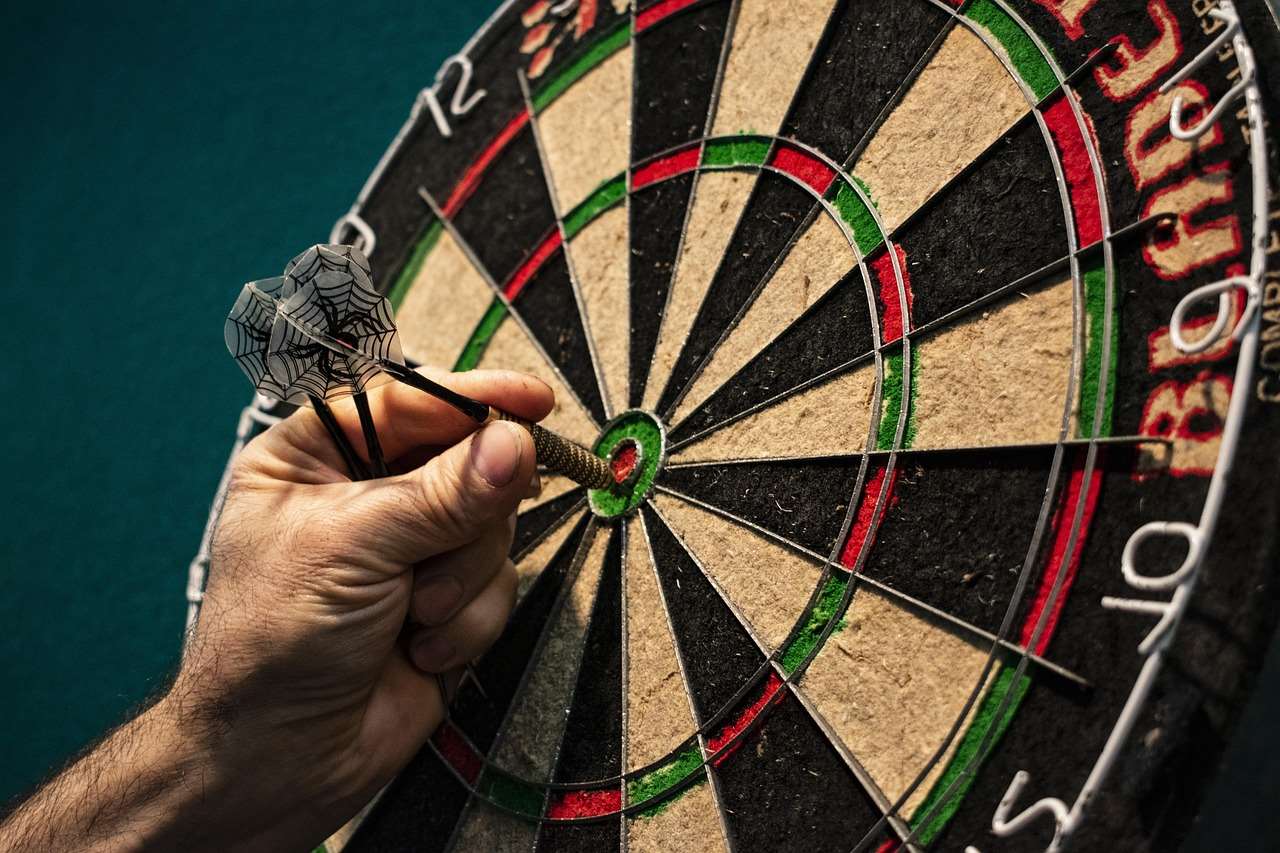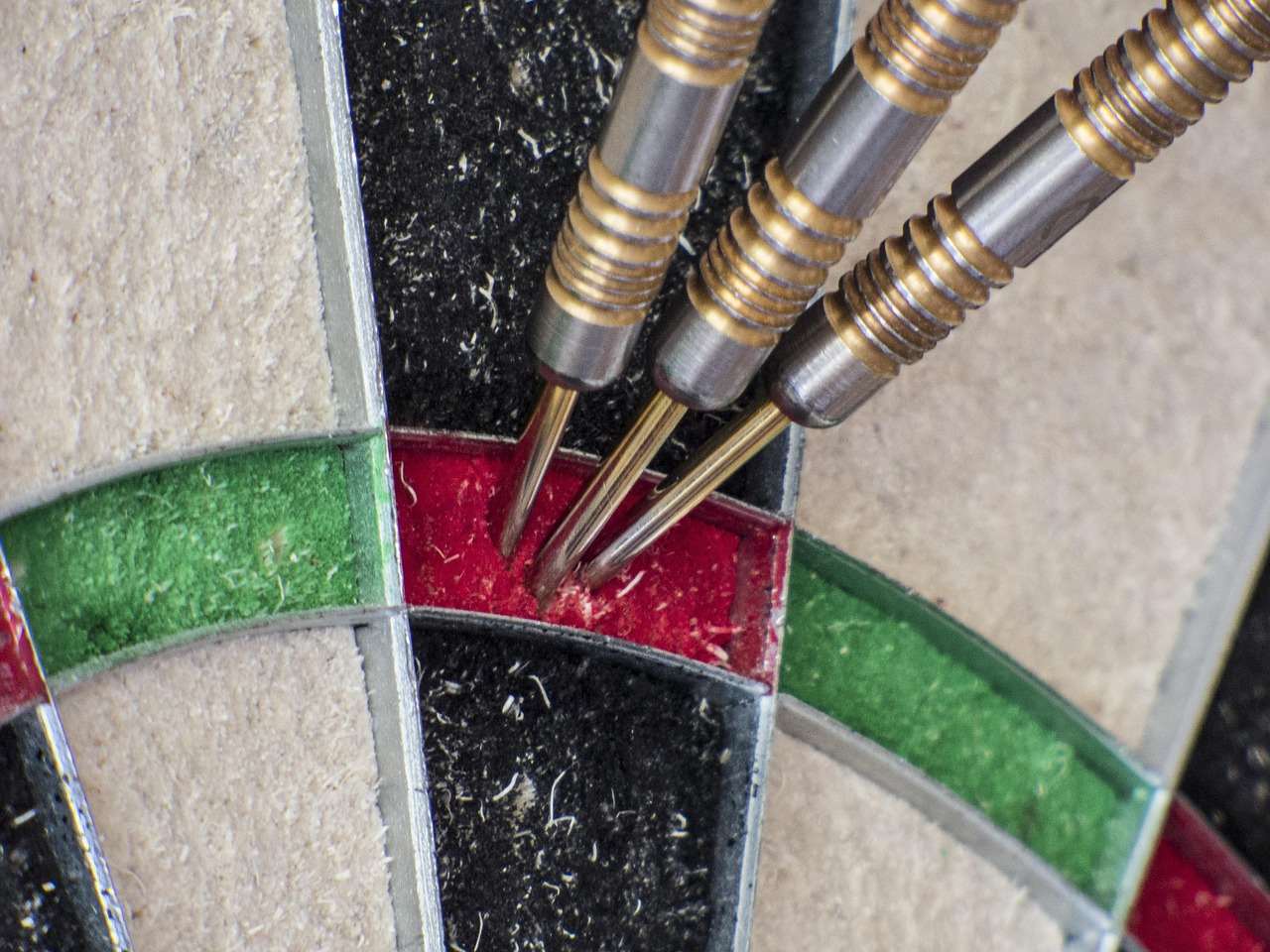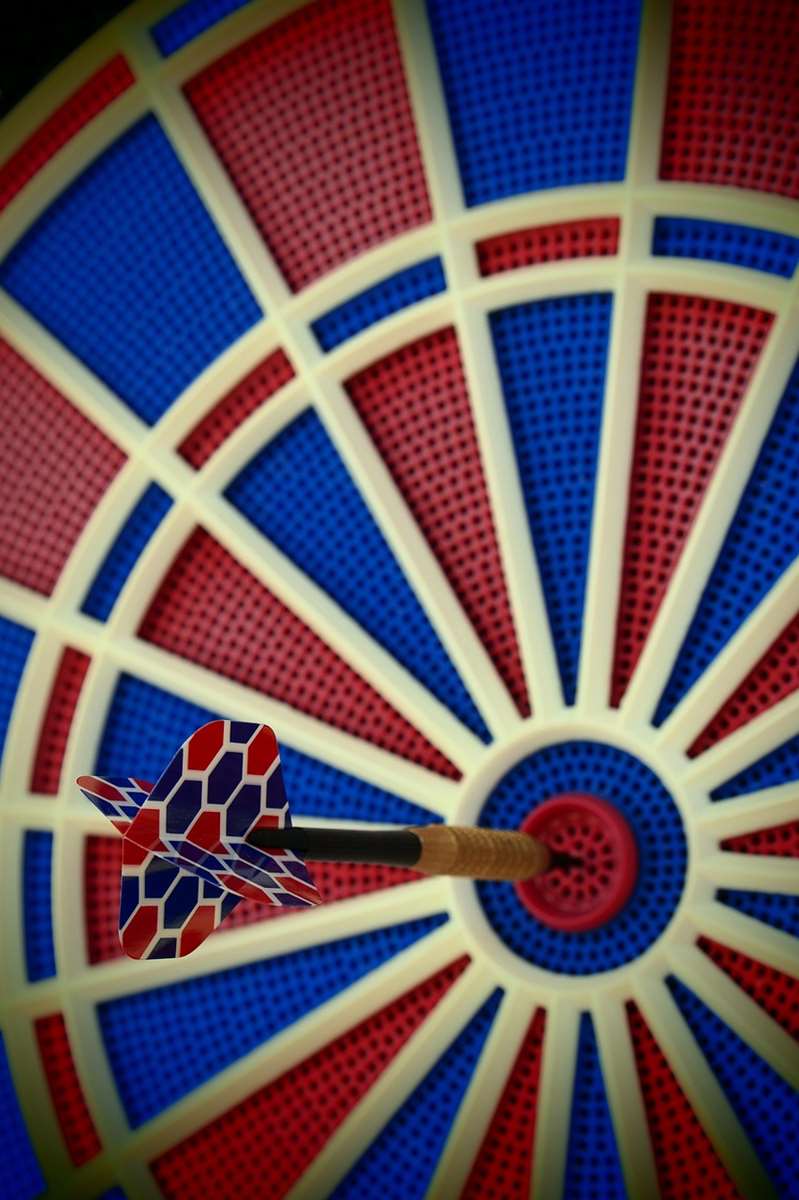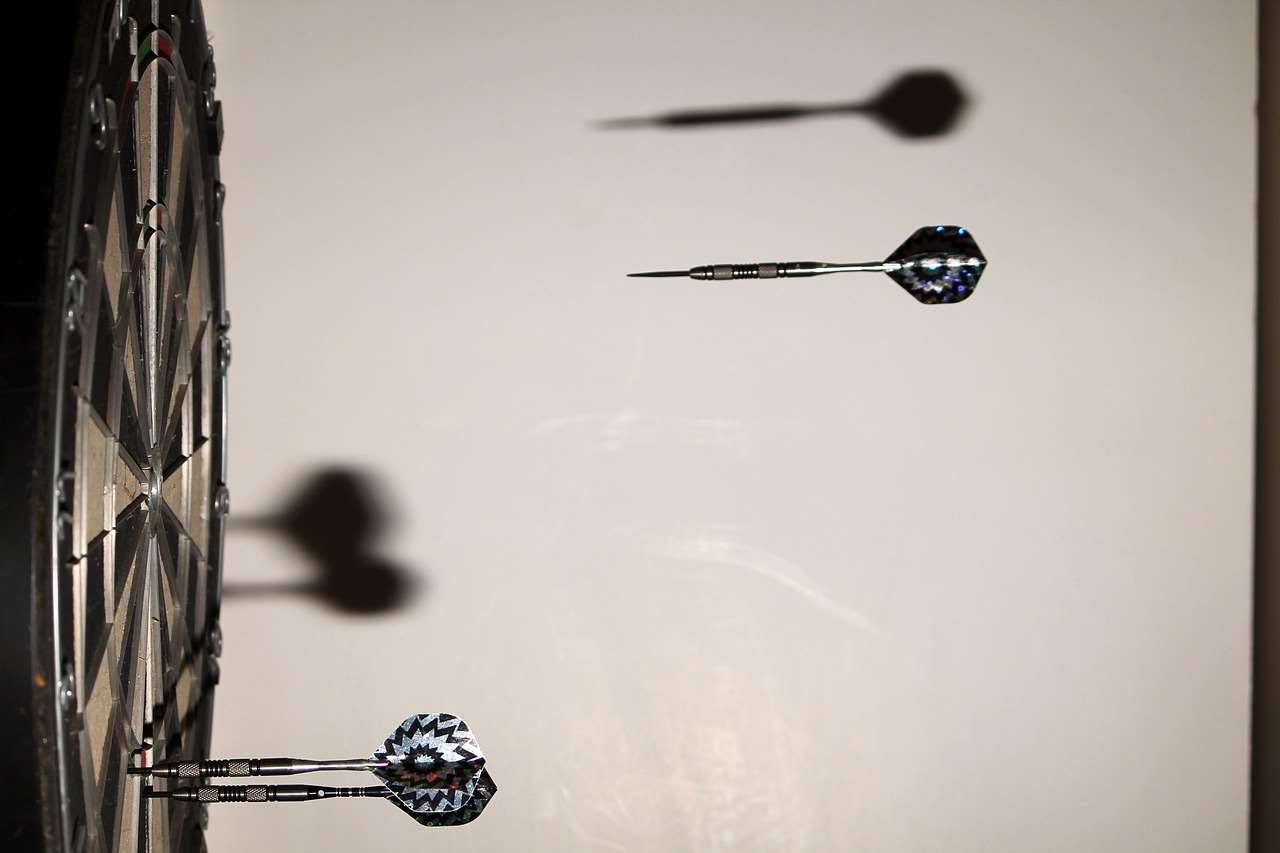The **bullseye** in darts is located precisely in the center of the dartboard. Knowing **where is the bullseye in darts** is fundamental, and this article will delve into its exact dimensions, scoring value, and strategies for hitting it consistently, along with other essential dartboard information.
⚠️ Still Using Pen & Paper (or a Chalkboard)?! ⚠️
Step into the future! The Dart Counter App handles all the scoring, suggests checkouts, and tracks your stats automatically. It's easier than you think!
Try the Smart Dart Counter App FREE!Ready for an upgrade? Click above!
Understanding Dartboard Anatomy: **Where is the Bullseye in Darts**?
To truly master darts, you need to understand the layout of the dartboard. Let’s break down the key sections:
- Bullseye: The central target, divided into the outer green ring (single bull) and the inner red circle (double bull).
- Double Ring: The outer ring of the dartboard; landing a dart in this ring doubles the score of that segment.
- Treble Ring: The inner ring, about halfway between the bullseye and the double ring; landing a dart here triples the score of that segment.
- Single Segments: The main sections between the wires, representing the base score for each number.
- Outer Bull (Single Bull): The green ring surrounding the bullseye worth 25 points.
- Inner Bull (Double Bull): The red bullseye at the very center, worth 50 points. Many players consider hitting the double bull a game-changer.
Knowing these different zones and their scoring values is crucial for strategic play and aiming.

The Precise Dimensions of the Bullseye
Accuracy in darts comes from knowing the dimensions. The official regulation dartboard has specific measurements for all its parts. The crucial dimensions to remember are:
- Overall Dartboard Diameter: 17 ¾ inches (451 mm)
- Double Bull Diameter: 0.5 inches (12.7 mm)
- Single Bull Diameter: 1.26 inches (32 mm)
These seemingly small measurements are significant. The small size of the **double bull** is what makes it such a challenging and rewarding target. Practice drills can help you get familiar with these dimensions and improve your precision.
You can even use **darts set tungsten** to make it more efficient.
The Scoring Power of the Bullseye
The **bullseye** holds a prominent place in darts due to its scoring value. Here’s a breakdown of its importance in scoring:
- Single Bull (Outer Green): Worth 25 points. This is a decent score, often used as a fallback when aiming for the double bull.
- Double Bull (Inner Red): Worth 50 points. The highest score possible with a single dart. It plays a vital role in finishing legs and increasing averages.
In games like 501, hitting the **double bull** to finish the game is a common and strategic move. Mastering this shot can significantly improve your game. Plus, don’t miss out on the MSS Darts.
Techniques for Consistently Hitting the Bullseye
So, you know **where is the bullseye in darts**, but how do you actually hit it consistently? Here are some techniques to practice:
- Stance: Maintain a consistent and balanced stance. Most players stand with one foot forward, perpendicular to the board. Experiment to find what feels most stable for you.
- Grip: A comfortable and consistent grip is key. Avoid gripping the dart too tightly, as this can cause tension and affect your throw.
- Aiming: Focus intently on the **bullseye** before each throw. Visualize the dart hitting the target.
- Release: A smooth and consistent release is crucial. Follow through with your arm towards the target.
- Practice: Consistent practice is the most important factor. Dedicate time to specifically practice hitting the **bullseye** from different angles and distances.

Common Mistakes to Avoid When Aiming for the Bullseye
Even with the best techniques, it’s easy to fall into common traps. Here are some mistakes to avoid when aiming for the bullseye and how to correct them:
- Tension: Holding too much tension in your arm or shoulder will negatively affect your accuracy. Focus on relaxing and throwing smoothly.
- Inconsistent Stance: A wobbly or shifting stance will make it difficult to aim accurately. Establish a stable and repeatable stance.
- Rushing the Throw: Taking too little time to aim and focus will lead to erratic throws. Take your time and visualize the shot before throwing.
- Not Following Through: Failing to follow through with your arm will reduce power and accuracy. Ensure a full and smooth follow-through.
- Ignoring Eye Dominance: Determine your dominant eye and align your stance and aim accordingly. This can dramatically improve your accuracy. You can search online to find ways to test for eye dominance.
Advanced Strategies: Beyond Simply Hitting the Bullseye
Once you can consistently hit the bullseye, you can start incorporating it into more advanced strategies:
- Finishing Combinations: Use the **double bull** strategically in finishing combinations. It’s a high-value target that can quickly close out a leg.
- Increasing Averages: Regularly hitting the **bullseye** will significantly increase your scoring average.
- Psychological Impact: Hitting a **bullseye** at a crucial moment can demoralize your opponent and give you a psychological edge.

The Importance of Equipment: Dartboard Quality and Dart Selection
Your equipment plays a crucial role in your ability to hit the **bullseye** consistently. Here’s what to consider:
- Dartboard Quality: Invest in a high-quality sisal fiber dartboard. These boards are more durable and offer better dart retention than cheaper alternatives. A good dartboard also has thinner wiring, which means less bounce-outs. A high-quality board, like a Winmau blade 6 or Unicorn Eclipse HD2, is a worthwhile investment.
- Dart Weight and Grip: Experiment with different dart weights and grips to find what feels most comfortable and allows for the most consistent release. Heavier darts are often preferred by beginners. You can find the best fit for you by researching various **dart flight brands**.
- Dart Shafts and Flights: Experiment with different shaft lengths and flight shapes to optimize the dart’s trajectory and stability. Shorter shafts often provide more stability, while longer shafts can increase accuracy.
Drills to Improve Your Bullseye Accuracy
Here are some specific drills to help you improve your bullseye accuracy:
- Bullseye 100: Throw 100 darts at the bullseye and track your score. Focus on consistency and aim.
- Around the Clock (Bullseye Edition): Starting with the 1 segment, throw three darts at each number in sequence, then three at the outer bull, and finally three at the **double bull**.
- Doubles Practice: Dedicate a practice session solely to hitting doubles, including the **double bull**. This improves your finishing skills.
If you are not able to keep score, you can get a **digital dart score app** that can help track your throws.

Maintaining Your Dartboard for Optimal Performance
Proper dartboard maintenance is essential for prolonging its lifespan and ensuring optimal performance. Here are some tips:
- Rotation: Regularly rotate your dartboard to distribute wear evenly. This prevents certain sections from becoming overly worn.
- Moisture Control: Keep your dartboard in a dry environment to prevent the sisal fibers from swelling and deteriorating.
- Dart Removal: Remove darts carefully to avoid damaging the sisal fibers. Use a dart removal tool if necessary.
The Mental Game: Focus and Visualization
Dart is as much a mental game as it is a physical one. Here are some tips for improving your mental approach:
- Focus: Concentrate intently on the **bullseye** before each throw. Block out distractions and maintain a clear mind.
- Visualization: Visualize the dart hitting the target before you throw. This helps to improve your aim and confidence.
- Positive Self-Talk: Encourage yourself with positive affirmations. Believe in your ability to hit the **bullseye**.
- Dealing with Pressure: Learn to manage pressure situations by focusing on your breathing and maintaining your routine.

Conclusion: Mastering the Bullseye and Elevating Your Game
Knowing **where is the bullseye in darts** is just the beginning. By understanding the dartboard layout, mastering the techniques, avoiding common mistakes, and honing your mental game, you can significantly improve your bullseye accuracy and elevate your overall darts performance. Remember, consistent practice and dedication are key to achieving your goals. Now, grab your darts and start practicing – that **double bull** awaits!
Ready to take your dart game to the next level? Consider joining a local darts league or investing in some quality dart equipment to further enhance your practice. Visit Digital dart score app today and track your progress!
Hi, I’m Dieter, and I created Dartcounter (Dartcounterapp.com). My motivation wasn’t being a darts expert – quite the opposite! When I first started playing, I loved the game but found keeping accurate scores and tracking stats difficult and distracting.
I figured I couldn’t be the only one struggling with this. So, I decided to build a solution: an easy-to-use application that everyone, no matter their experience level, could use to manage scoring effortlessly.
My goal for Dartcounter was simple: let the app handle the numbers – the scoring, the averages, the stats, even checkout suggestions – so players could focus purely on their throw and enjoying the game. It began as a way to solve my own beginner’s problem, and I’m thrilled it has grown into a helpful tool for the wider darts community.